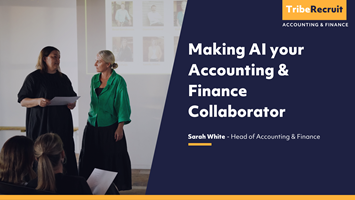Tribe's Head of Finance & Operations, Brad Gatehouse, breaks down what the future workforce will look like.

To hire and develop your future workforce, it’s important to understand what factors influence their decisions.
We have already seen big changes in what motivates candidates to change jobs and to stay with an employer. Previously, remuneration and incentives were leading factors but this has slipped down the ranks in recent years and been replaced by a ‘sense of purpose’. So it’s going to be important to have that connection to a cause in order to attract talent. A strong social conscience, clear and meaningful policies around sustainability and goals to reduce environmental impact will be an expectation of the future workforce.
What’s also clear is that an increasing proportion of the workforce will be ‘digital natives’, having only known a world with Internet. To accommodate them, employers will need to ensure their workplace is technology ready. This includes an up-to-date cloud-based network, allowing employees to not only Work From Home (WFH) but to Work From Anywhere (WFA) - which is becoming the new buzz word!
The uptake of ‘WFA’ has been growing and has accelerated rapidly since the onset of CV-19. It creates the opportunity to develop a more egalitarian, less hierarchical work environment. There is an age-old adage about monitoring performance through ‘outputs not inputs’, which is often easier said than done. Now more than ever it will be critical to the success of any WFA policy that there’s trust in your employees and assessment on agreed outcomes. Effective leadership is also going to be important, along with consistent and regular communication.
The optimists are predicting a reduction in stress and improved wellbeing, increased productivity and less commuting having a healthy effect on the wallet. The pessimists highlight difficulty collaborating, reduced social connection and an impact on company culture. Plus, not everyone is lucky enough to have space in their home suitable for a modern work office. A fit-for-purpose ergonomic work environment is critical, whether it is in your home or at the office. We’re already seeing an increase in back and neck-related injuries through ACC since lockdown, as a result of people working on laptops while sitting on their beds. Also often overlooked is the legal responsibility on the employer to ensure a safe workplace in accordance with ACC legislation. The liability for injuries caused while WFA sits squarely on the shoulders of the company’s directors.
Although still common in Japan the days of a ‘job for life’ are long gone and have been replaced by the ‘gig economy’. The future workforce will likely take on several short-term assignments and may have several ‘gigs’ on the go at any one time. Providing enough flexibility will be the key to accommodate this requirement of the workforce of the future.
At the end of the day, no matter what the future of work looks like, the smart employers will be the ones who continue to hire based upon attitude and not skills. If you recruit the right attitude you can teach the skills, but attitude can’t be taught.





